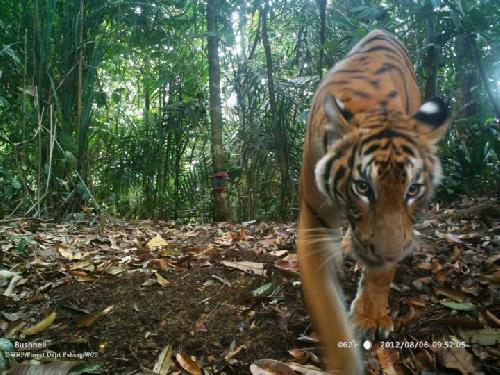New paper says failure of protected areas to guard biodiversity is partly the fault of scientists
Science community needs to identify science-based targets, metrics of ecological effectiveness, and better measuring outside of protected areas
 Tiger captured in camera trap in Endau-Rompin, Malaysia. Credit: WCS/Government of Malaysia
Tiger captured in camera trap in Endau-Rompin, Malaysia. Credit: WCS/Government of Malaysia
Results offer strategic guidance on where protected areas should be cited to avert biodiversity loss